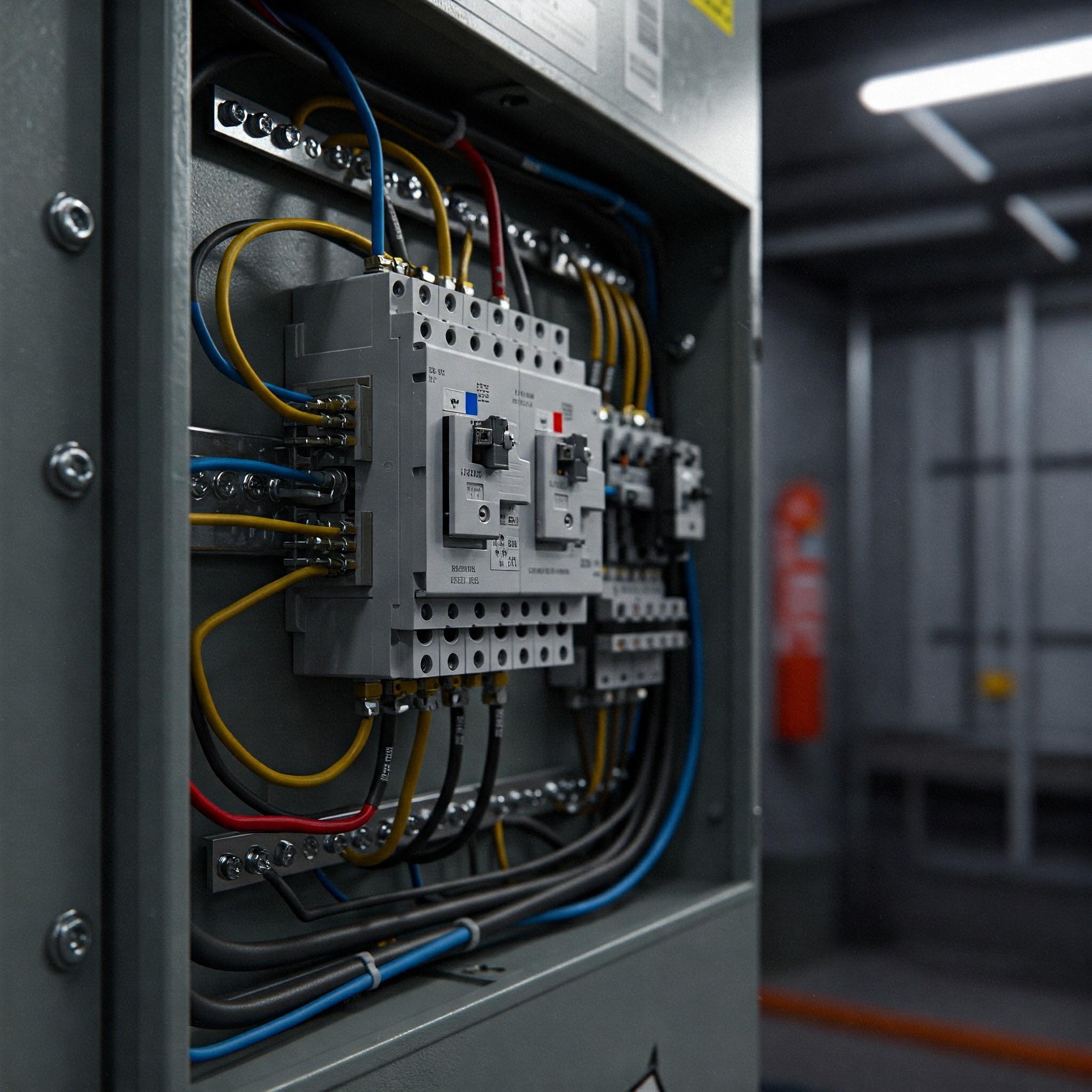
How to calculate switchgear rating for your Electrical Installation & What are the different types of switchgears?

Switchgear is an essential component in electrical installations, providing protection, control, and isolation of electrical circuits and equipment. The switchgear rating is a critical parameter that determines the maximum current and voltage levels that the switchgear can safely handle. This essay will elaborate on the methods and considerations involved in calculating the switchgear rating for electrical installations.
Understanding Switchgear
Before delving into the calculation of switchgear ratings, it’s essential to understand the fundamental principles of switchgear. Switchgear is a combination of electrical disconnect switches, fuses, or circuit breakers used to control, protect, and isolate electrical equipment. It is typically installed in substations, power plants, and industrial facilities to ensure the safe and reliable operation of electrical systems.
Switchgear serves several purposes, including:
1.Protection: Switchgear protects electrical equipment and circuits from overcurrent, short circuits, and other electrical faults.
2.Control: Switchgear provides manual or automatic control of electrical circuits and equipment.
3.Isolation: Switchgear isolates electrical equipment and circuits for maintenance, repair, or testing.
4.Monitoring: Switchgear provides monitoring and indication of electrical parameters, such as voltage, current, and temperature.
Factors Influencing Switchgear Rating
Several factors influence the rating of switchgear in an electrical installation. These factors include:
- Voltage Level: The switchgear rating should be compatible with the voltage level of the electrical system. This includes both the nominal voltage and the maximum voltage that the switchgear can safely handle.
- Current Level: The switchgear rating should be compatible with the current level of the electrical system. This includes both the nominal current and the maximum current that the switchgear can safely handle.
- Frequency: The switchgear rating should be compatible with the frequency of the electrical system. This includes both the nominal frequency and the maximum frequency that the switchgear can safely handle.
- Type of Load: The switchgear rating should be suitable for the type of load, such as resistive, inductive, or capacitive. This includes both the steady-state and transient load conditions.
- Environmental Conditions: The switchgear rating should be suitable for the environmental conditions, such as temperature, humidity, and exposure to corrosive or hazardous substances.
- Installation Requirements: The switchgear rating should be suitable for the installation requirements, such as the location, mounting method, and accessibility.
- Code and Standards: The switchgear rating should comply with relevant codes and standards, such as the National Electrical Code (NEC) and the Institute of Electrical and Electronics Engineers (IEEE) standards.
Calculation of Switchgear Rating
The calculation of switchgear ratings involves several steps, including determining the voltage and current levels, selecting the appropriate switchgear type, and considering various design factors. The following sections will elaborate on these steps in detail.
Step 1: Determine Voltage and Current Levels
Begin the process by identifying the voltage and current levels of the electrical system. This includes both the nominal and maximum voltage and current values that the switchgear must safely manage. You can determine these parameters based on factors such as electrical load requirements, voltage drop analysis, and future expansion needs.
Step 2: Select Switchgear Type
After establishing the system’s voltage and current levels, the next step is to choose the most appropriate type of switchgear. The options include:
Circuit Breakers
These protect electrical circuits from overcurrent, short circuits, and other faults. They come in various forms such as:Air Circuit Breakers (ACB)
Vacuum Circuit Breakers (VCB)
SF6 Circuit Breakers
Fuses
Fuses provide overcurrent and short circuit protection. They contain a metal strip that melts under excessive current, thereby interrupting the circuit.Disconnect Switches
Used to isolate electrical equipment for maintenance, repair, or testing, these switches are available in types like:Load Break Switches
Isolating Switches
Motorized Switches
Contactors
These devices control the operation of electrical motors and equipment by opening or closing a set of contacts.Relays
Relays operate based on inputs from sensors or control devices. They use a coil mechanism to open or close contacts depending on energization.
Step 3: Consider Design Factors
With the switchgear type selected, evaluate the following design factors to ensure proper rating and safe operation:
Voltage Rating
Confirm that the switchgear matches both the nominal and maximum system voltage levels.Current Rating
Ensure the switchgear can safely handle the system’s operating and peak current levels.Frequency Rating
Verify that the switchgear’s frequency rating aligns with the system’s frequency (typically 50 Hz or 60 Hz).Environmental Rating
Select a unit that suits the installation environment, considering temperature, humidity, and exposure to corrosive substances.Installation Requirements
Factor in elements such as location, mounting methods, and ease of access for operation and maintenance.Codes and Standards
Ensure compliance with standards such as:National Electrical Code (NEC)
IEEE Standards
Local regulatory codes
Step 4: Perform Calculations
Finally, use the gathered data to perform the necessary calculations. This includes:
Determining the exact voltage and current requirements
Selecting the appropriate switchgear type based on these requirements
Verifying design compatibility using the listed factors
These calculations help ensure that the switchgear system is not only safe but also reliable and efficient for the intended application.



